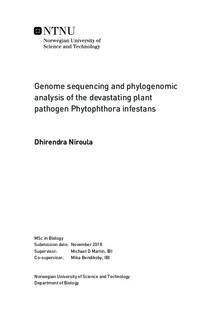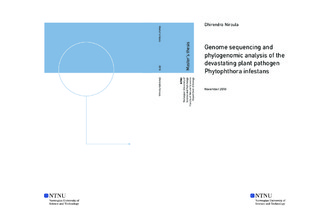| dc.description.abstract | The oomycete P. infestans is a plant pathogen responsible for late blight of potato and tomato. This rapidly evolving pathogen is of persistent concern because of the damage it has caused since the infamous Irish famine of 1845. Although many P. infestans genetic studies have been completed, the actual center of origin and famine-era strain has not been determined with certainty. We built genome libraries and sequenced 108 present-day isolates of P. infestans from six different locations of Mexico. We assembled 107 resequenced mitochondrial (mtDNA) genome sequences with 80 previously studied sequences from the global sources for our phylogenomic analysis. We also used 14 high-depth genomic sequences for effector gene analysis. The major objectives of this study are: to complete a phylogenomic analysis of P. infestans isolates from mitochondrial genome sequences (n = 187), and to characterize novel RXLR gene sequences assembled from the high-depth nuclear genome (n = 14) sequencing data. The phylogenomic analysis led us to observe that HERB-1 haplotypes are actually very common in Mexico. Toluca, which is often considered to harbor the most genetically diverse populations and to be the center of origin of the pathogen, is not found to be especially genetically diverse in the mitochondrial genome, because there we found a predominance of only the Ia mtDNA lineage. Our study also finds that the Ib mtDNA lineage is rare in recent times. In contrast to previous studies, our results do not support the claim of divergence of type I and type II lineage in South America. We name a new mtDNA lineage as lineage III, which is common in the study of isolates from Michoacán, and we suspect these isolates to belong to the aggressive lineage of global origin (AGG). We discovered 10 novel RXLR genes in this study from an assembly of unmapped nuclear genome sequence reads. Cluster analysis reveals that most of these novel genes belong to a large cluster consisting of the RXLR genes that according to the P. infestans reference genome annotation are not classified as secreted RXLR effector gene families. This cluster is the largest, and new RXLR genes discovered belong to this cluster, indicating the cluster to be highly dynamic in nature.
Keywords: Phytophthora infestans, late blight, Irish potato famine, Mexico, phylogenetics, mtDNA, lineages, HERB-1, RXLR, cluster analysis | en |

